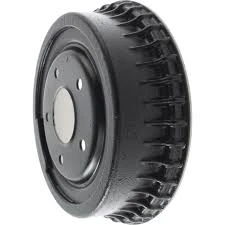
-
 Afrikaans
Afrikaans -
 Albanian
Albanian -
 Amharic
Amharic -
 Arabic
Arabic -
 Armenian
Armenian -
 Azerbaijani
Azerbaijani -
 Basque
Basque -
 Belarusian
Belarusian -
 Bengali
Bengali -
 Bosnian
Bosnian -
 Bulgarian
Bulgarian -
 Catalan
Catalan -
 Cebuano
Cebuano -
 Corsican
Corsican -
 Croatian
Croatian -
 Czech
Czech -
 Danish
Danish -
 Dutch
Dutch -
 English
English -
 Esperanto
Esperanto -
 Estonian
Estonian -
 Finnish
Finnish -
 French
French -
 Frisian
Frisian -
 Galician
Galician -
 Georgian
Georgian -
 German
German -
 Greek
Greek -
 Gujarati
Gujarati -
 Haitian Creole
Haitian Creole -
 hausa
hausa -
 hawaiian
hawaiian -
 Hebrew
Hebrew -
 Hindi
Hindi -
 Miao
Miao -
 Hungarian
Hungarian -
 Icelandic
Icelandic -
 igbo
igbo -
 Indonesian
Indonesian -
 irish
irish -
 Italian
Italian -
 Japanese
Japanese -
 Javanese
Javanese -
 Kannada
Kannada -
 kazakh
kazakh -
 Khmer
Khmer -
 Rwandese
Rwandese -
 Korean
Korean -
 Kurdish
Kurdish -
 Kyrgyz
Kyrgyz -
 Lao
Lao -
 Latin
Latin -
 Latvian
Latvian -
 Lithuanian
Lithuanian -
 Luxembourgish
Luxembourgish -
 Macedonian
Macedonian -
 Malgashi
Malgashi -
 Malay
Malay -
 Malayalam
Malayalam -
 Maltese
Maltese -
 Maori
Maori -
 Marathi
Marathi -
 Mongolian
Mongolian -
 Myanmar
Myanmar -
 Nepali
Nepali -
 Norwegian
Norwegian -
 Norwegian
Norwegian -
 Occitan
Occitan -
 Pashto
Pashto -
 Persian
Persian -
 Polish
Polish -
 Portuguese
Portuguese -
 Punjabi
Punjabi -
 Romanian
Romanian -
 Russian
Russian -
 Samoan
Samoan -
 Scottish Gaelic
Scottish Gaelic -
 Serbian
Serbian -
 Sesotho
Sesotho -
 Shona
Shona -
 Sindhi
Sindhi -
 Sinhala
Sinhala -
 Slovak
Slovak -
 Slovenian
Slovenian -
 Somali
Somali -
 Spanish
Spanish -
 Sundanese
Sundanese -
 Swahili
Swahili -
 Swedish
Swedish -
 Tagalog
Tagalog -
 Tajik
Tajik -
 Tamil
Tamil -
 Tatar
Tatar -
 Telugu
Telugu -
 Thai
Thai -
 Turkish
Turkish -
 Turkmen
Turkmen -
 Ukrainian
Ukrainian -
 Urdu
Urdu -
 Uighur
Uighur -
 Uzbek
Uzbek -
 Vietnamese
Vietnamese -
 Welsh
Welsh -
 Bantu
Bantu -
 Yiddish
Yiddish -
 Yoruba
Yoruba -
 Zulu
Zulu
Finding the Location of Drum Brake Bleeder Valves for Efficient Maintenance
Understanding Drum Brake Bleeder Valve Location
Drum brakes are a crucial component of a vehicle’s braking system, providing effective stopping power and ensuring safety during operation. One essential aspect of maintaining drum brakes is properly managing the brake fluid, which includes bleeding the system to remove any air bubbles. This process ensures optimal performance and responsiveness when the brakes are engaged. A key element of bleeding the drum brake system is the bleeder valve. This article explores the location of the drum brake bleeder valve and its significance in vehicle maintenance.
What is a Bleeder Valve?
A bleeder valve is a small, threaded fitting located on the brake cylinder or wheel cylinder of a drum brake system. The purpose of this valve is to allow air and old brake fluid to escape from the brake lines. During brake maintenance or fluid changes, it is crucial to bleed the brakes to ensure that no air remains in the hydraulic brake system. Air in the system can lead to a spongy brake pedal feel and reduced braking efficiency.
Location of the Drum Brake Bleeder Valve
The specific location of the bleeder valve can vary depending on the make and model of the vehicle. Typically, the bleeder valve is located on the rear brake wheel cylinder, which is situated inside the brake drum.
1. Identifying the Wheel Cylinder To locate the bleeder valve, you must first find the wheel cylinder. This component is typically mounted on the rear of the brake backing plate. It contains the pistons that push the brake shoes outward against the drum when the brakes are applied.
drum brake bleeder valve location

2. Finding the Bleeder Valve Once you have located the wheel cylinder, the bleeder valve will usually be a small, protruding fitting with a hex head. It may require a 7mm, 8mm, or 10mm wrench to open it. The valve is typically oriented upwards or to the side, making it easier to access when bleeding the brakes.
3. Specific Vehicle Considerations For certain vehicles, especially those with unique suspension designs or limited clearance in the wheel area, access to the bleeder valve can be challenging. Sometimes, you may need to remove the wheel or even the brake drum itself to gain proper access.
Importance of Correct Bleeding
Properly bleeding your drum brakes ensures that air does not interfere with the hydraulic pressure needed for effective braking. When the brake pedal is depressed, the brake fluid creates pressure that actuates the brake shoes against the drum. If air is present, it can compress under pressure, leading to decreased braking effectiveness and safety concerns.
Make it a habit to bleed the brakes periodically, particularly when replacing brake fluid or components, or after any maintenance work on the system. This proactive approach can prevent air from compromising your braking performance.
Conclusion
The bleeder valve is a small but vital part of maintaining your drum brake system. Knowing its location helps vehicle owners and mechanics properly perform maintenance, ensuring that the braking system remains efficient and safe. Regularly checking and bleeding the brakes can significantly contribute to the overall performance of your vehicle, providing peace of mind on the road. Always consult the vehicle’s service manual for specifics on your model to ensure that you are performing the maintenance correctly. By being proactive about brake maintenance, you not only extend the life of your braking components but also enhance your driving safety and experience.
-
What Are Drum BrakesNewsJul.07,2025
-
Understanding Brake Drum MaterialNewsJul.07,2025
-
Semi-Trailer Brake Drum: A Key Component for Extreme Loads and Long-Distance TransportNewsJul.07,2025
-
Drum Brake Pads for SaleNewsJul.07,2025
-
Brake Drums for SaleNewsJul.07,2025
-
Brake Drum ManufacturerNewsJul.07,2025
-
Aluminum Brake Drums: The Future of High-Performance CarsNewsJul.07,2025
